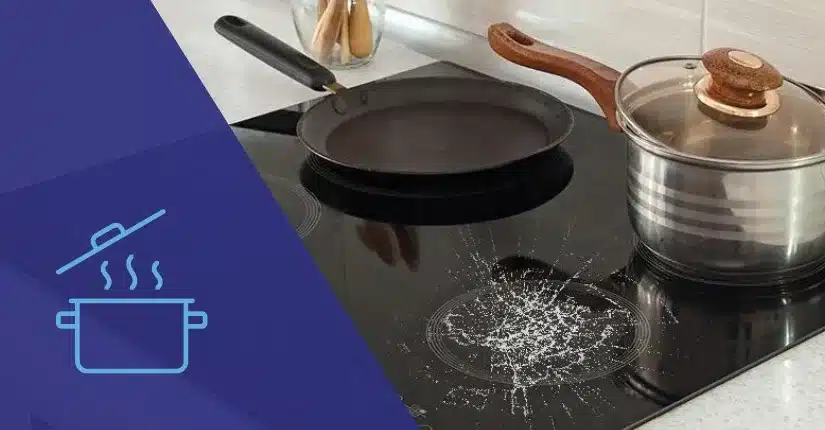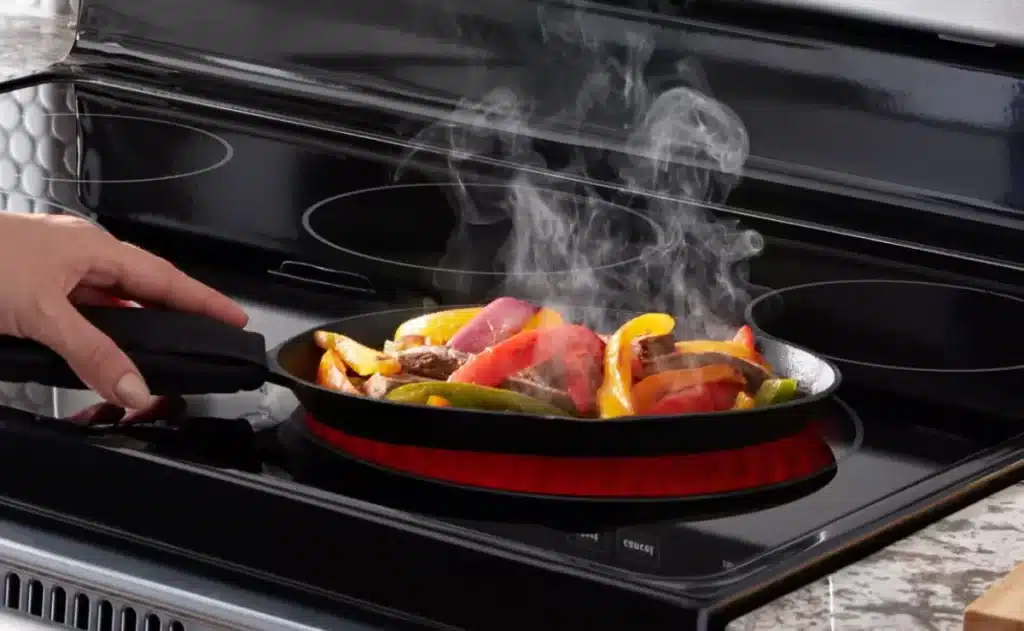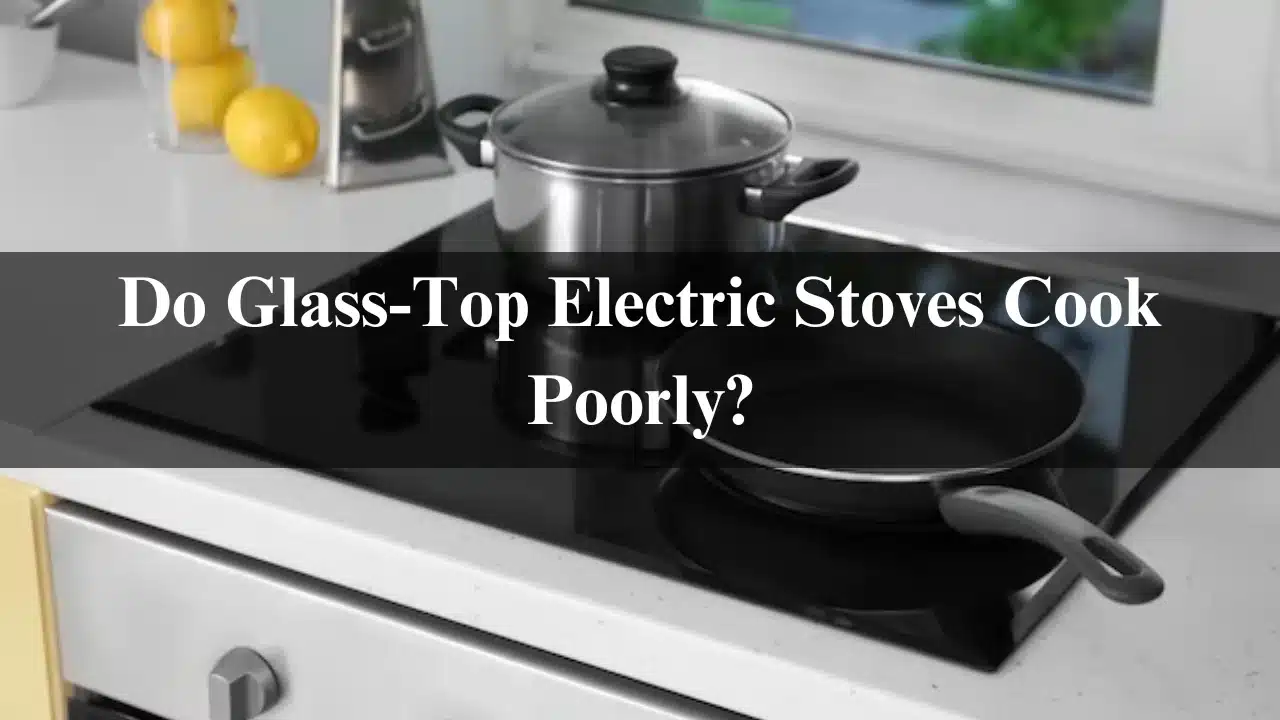Hey there! Ever wondered if glass-top electric stoves are supposed to cook as poorly as some people say? If you’ve used one and thought, “This thing just doesn’t cook right!”—you’re not alone! Many folks find themselves frustrated with how slow they heat up or how unevenly they cook food.
But here’s the thing: It doesn’t have to be that way! A lot of the complaints you hear come down to how the stove is used or what type of cookware people are using. In this article, we’re going to explore why some people think glass top stoves cook like, well, you know… and how you can actually make them work great. Let’s get started!
Table of Contents
How Do Glass-Top Electric Stoves Work?
The Basics: Understanding Electric Stoves
First, let’s talk about how electric stoves work. Unlike gas stoves, which use a flame, electric stoves use heating elements. These elements are metal coils that heat up when electricity runs through them. On most electric stoves, you can see the coils right on the stove top. But on a glass top stove, those coils are hidden underneath a smooth, flat glass surface.
Why the Glass Top?
Glass-top stoves look sleek and modern, right? That’s one big reason people like them. The smooth surface makes it easier to clean (no more scrubbing around metal coils!). But here’s the catch: that glass can act as a barrier, slowing down how quickly the heat reaches your pots and pans.
The Pros and Cons of Glass Tops
So why do people get glass tops in the first place? Here are some pros and cons to keep in mind:
- Pros
➜ They look great in your kitchen.
➜ They’re easier to clean compared to traditional stoves.
➜ The flat surface is perfect for sliding pots around. - Cons
➜ They can be slower to heat up.
➜ Glass tops can scratch or stain if not cared for properly.
➜ They sometimes cook unevenly, leaving you frustrated.
Common Complaints: Why People Think Glass Top Stoves Cook Poorly?
Let’s be real. Some people just don’t love their glass top stoves, and they’ve got a few common complaints. Let’s dive into those and see what’s going on.

Slow Heating
One of the biggest gripes is how slow the stove heats up. If you’re used to a gas stove that gives you instant heat, this can feel like watching paint dry! The glass surface doesn’t conduct heat as well as a metal coil, so it takes longer for the heat to transfer to your cookware.
Uneven Cooking
Another complaint is that food doesn’t cook evenly. You might have one side of the pan that’s super hot and the other side that’s barely warm. This happens because heat can get trapped under the glass, making it harder for it to spread out evenly.
Scratches and Stains
Glass top stoves also get a lot of hate for scratching easily or getting stained by spills. Once that glass is damaged, it’s not easy (or cheap) to fix.
Are You Using It Right?
Here’s where things get interesting. A lot of the frustration with glass top stoves can be fixed by using the right tools and techniques! Let’s go over a few tips.

Choosing the Right Cookware
Not all pots and pans are created equal. For glass top stoves, you need flat-bottomed cookware. Why? Because flat bottoms sit evenly on the glass, allowing the heat to spread more consistently. If your pan has a warped bottom, it’s not going to make good contact, and that means uneven cooking.
Pro Tip: Stick to materials like stainless steel or aluminum, which heat evenly and work well on glass tops.
Tips for Cooking Evenly
If you’re dealing with hot spots (areas where the stove is hotter than others), try rotating your pan every so often while you cook. This helps spread the heat around, so your food cooks more evenly.
Keeping Your Stove Clean
A clean stove is a happy stove! Spills can stick to the glass and block the heat, making your stove work less effectively. Wipe it down after each use with a soft cloth and some stovetop cleaner to keep things smooth.
How to Get the Best Results from a Glass Top Stove?
Alright, now that we’ve covered the basics, let’s talk about how to get the best results from your stove.

Preheating and Temperature Control
Unlike gas stoves, electric stoves need a little time to heat up. Give your stove a couple of minutes to preheat before you start cooking. And be careful with the heat settings. Glass top stoves respond slowly to temperature changes, so if you turn the heat up or down, it might take a few minutes to notice the difference.
Stirring and Moving Food Around
Because of those uneven heat spots, it’s a good idea to stir your food frequently or move it around in the pan. This helps distribute the heat and keeps your food from burning on one side while undercooking on the other.
Bonus Tip: Managing Hot Spots
If your stove has persistent hot spots, try cooking with a diffuser. A diffuser is a flat metal plate that sits between your pan and the stove, helping spread the heat more evenly.
Real-Life Stories: People Who Made It Work
“It Took Time, But I Got the Hang of It”
Meet Sarah, who was ready to throw out her glass top stove after just one week. “I couldn’t get anything to cook right,” she says. But after trying different pans and giving herself time to adjust, she found her groove. “Now, I actually prefer it to my old gas stove!”
“My Cookware Was the Problem All Along”
Tom thought his stove was broken because everything was burning on one side. But it turned out his pans were the issue! After switching to flat-bottomed cookware, his meals came out perfectly.
Key Takeaways:
➜ Use flat-bottomed cookware for even cooking.
➜ Preheat your stove and be patient with temperature changes.
➜ Keep your glass top clean to avoid cooking issues.
Related Article:
How are new electric stoves vented? Latest Info 2024
How does a single burner on an electric stove get hot? 2024
Is It Possible To Use Two Electric Stoves At The Same Time?
How many burners are there on an electric stove? 5 Types
Conclusion:
So, are glass-top electric stoves supposed to cook like ass? Absolutely not! While they might have some quirks, they can cook just as well as any other stove once you know how to use them. By following the right tips—like using the right cookware, keeping your stove clean, and managing hot spots—you can enjoy a smooth cooking experience.
If you’re struggling with your stove right now, don’t give up! You’ve got this, and with a little practice, your glass top stove can become your kitchen’s best friend.
FAQs
Why does a glass-top electric stove cook slower than a coil stove?
Glass-top stoves take longer to heat because they rely on radiant heat, which is slower than
direct coil heating.
Is cast iron safe to use on a glass-top electric stove?
Yes, but be cautious of scratches and avoid dragging the pan.
How can I prevent scratches on my glass-stove electric stove?
Use cookware with smooth bottoms, lift rather than drag pans, and clean regularly.
How do I check if my cookware is compatible with a glass-top electric stove?
Flat-bottomed, smooth cookware is best; check the manufacturer’s guidelines.
Can glass-top electric stoves crack from heavy pans or high heat?
Yes, excessive weight or sudden high heat can cause cracks.




